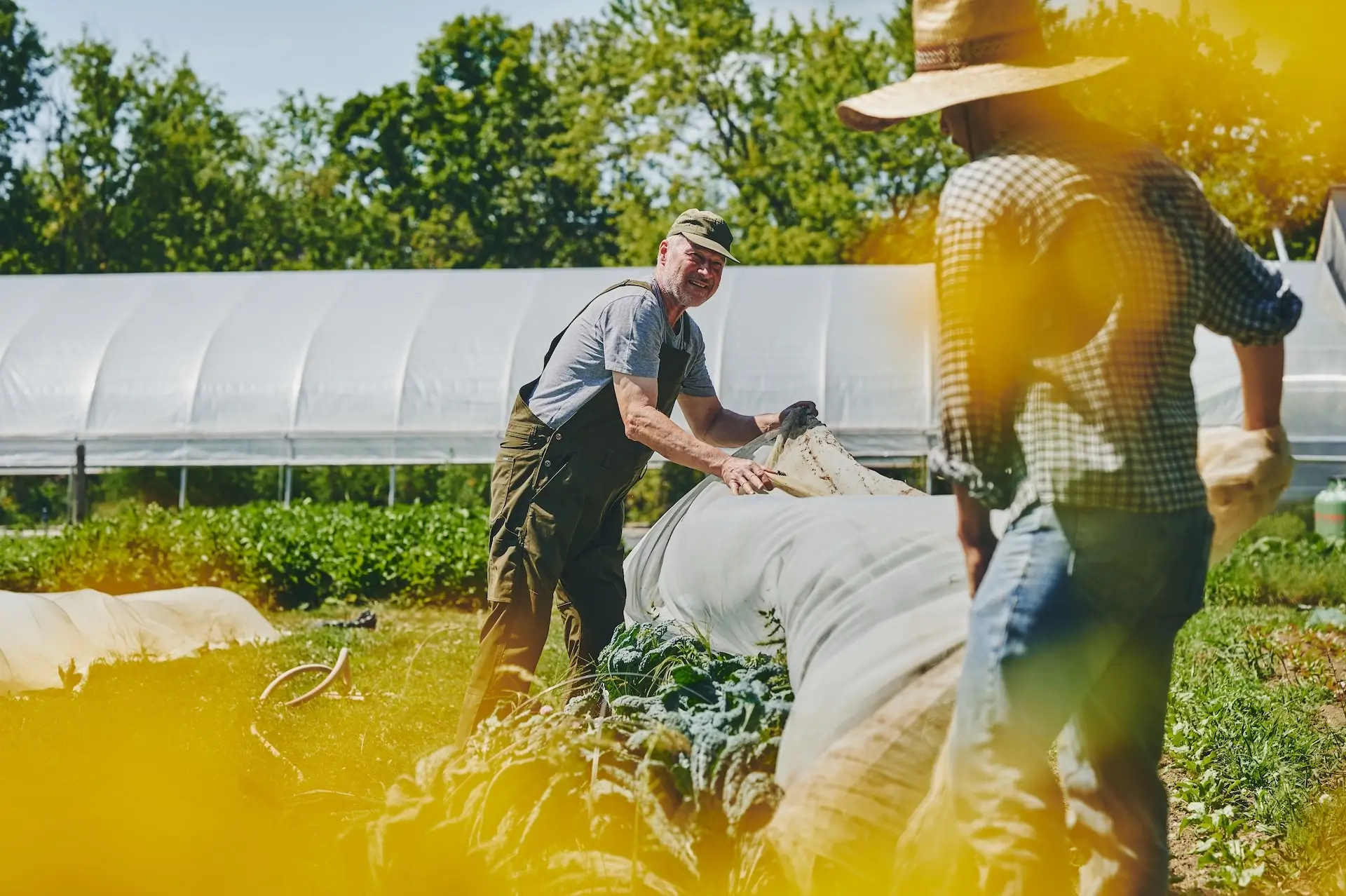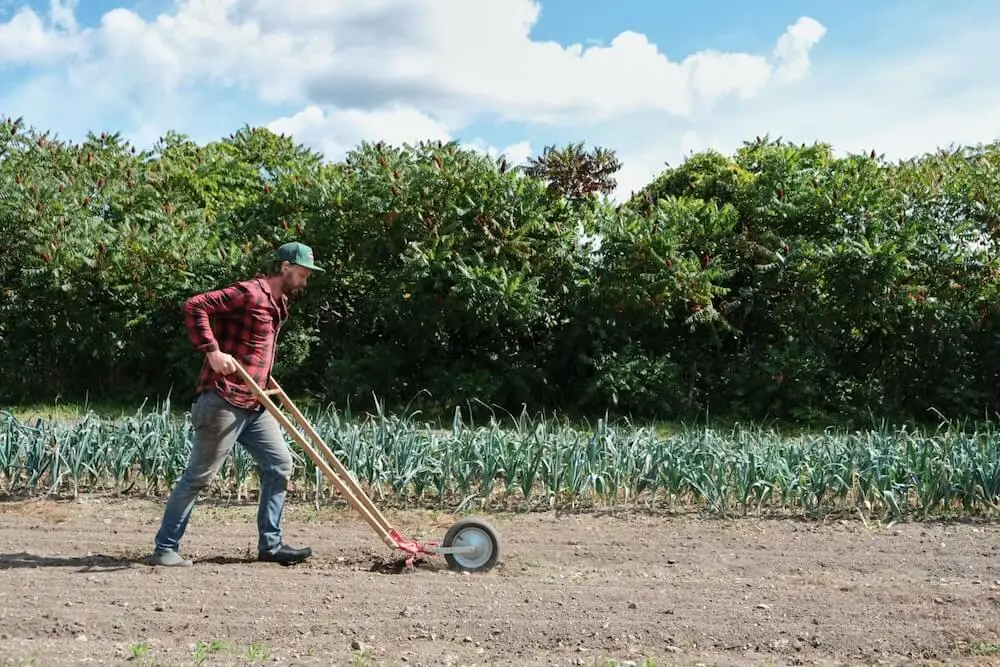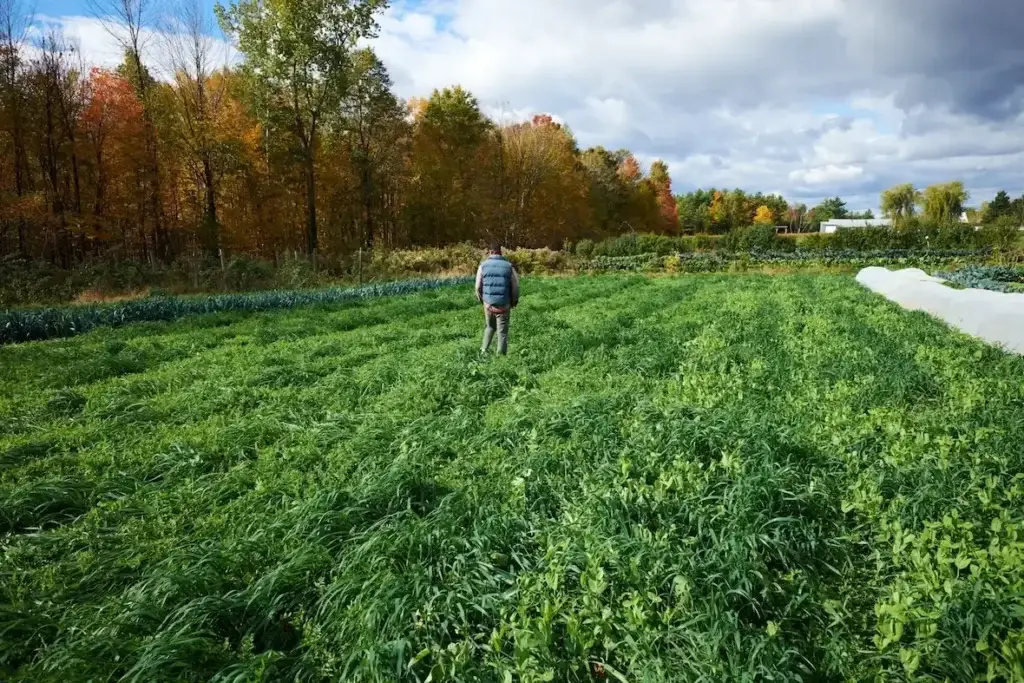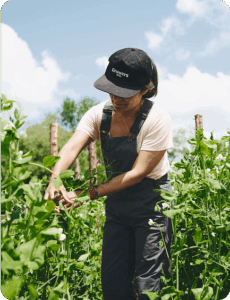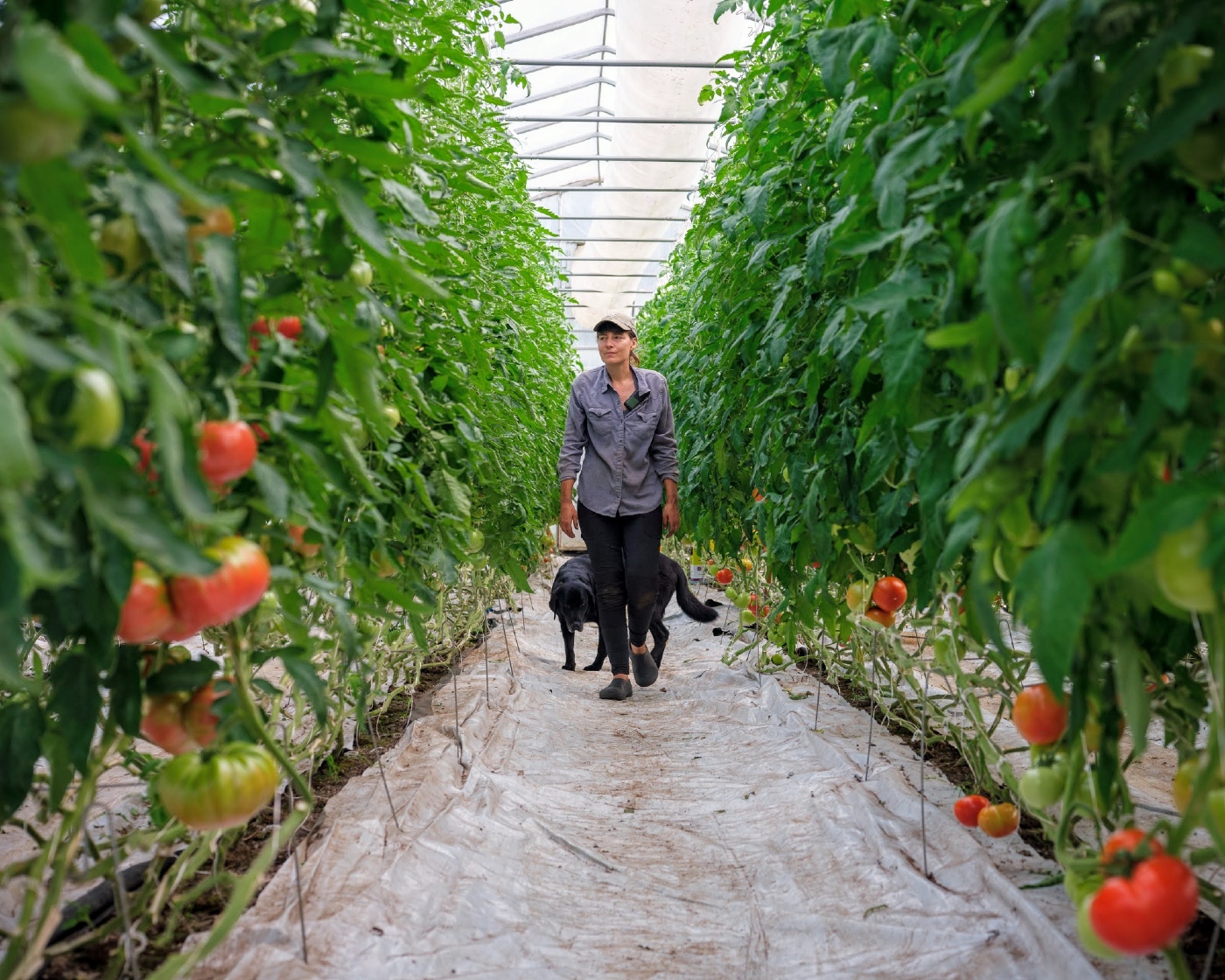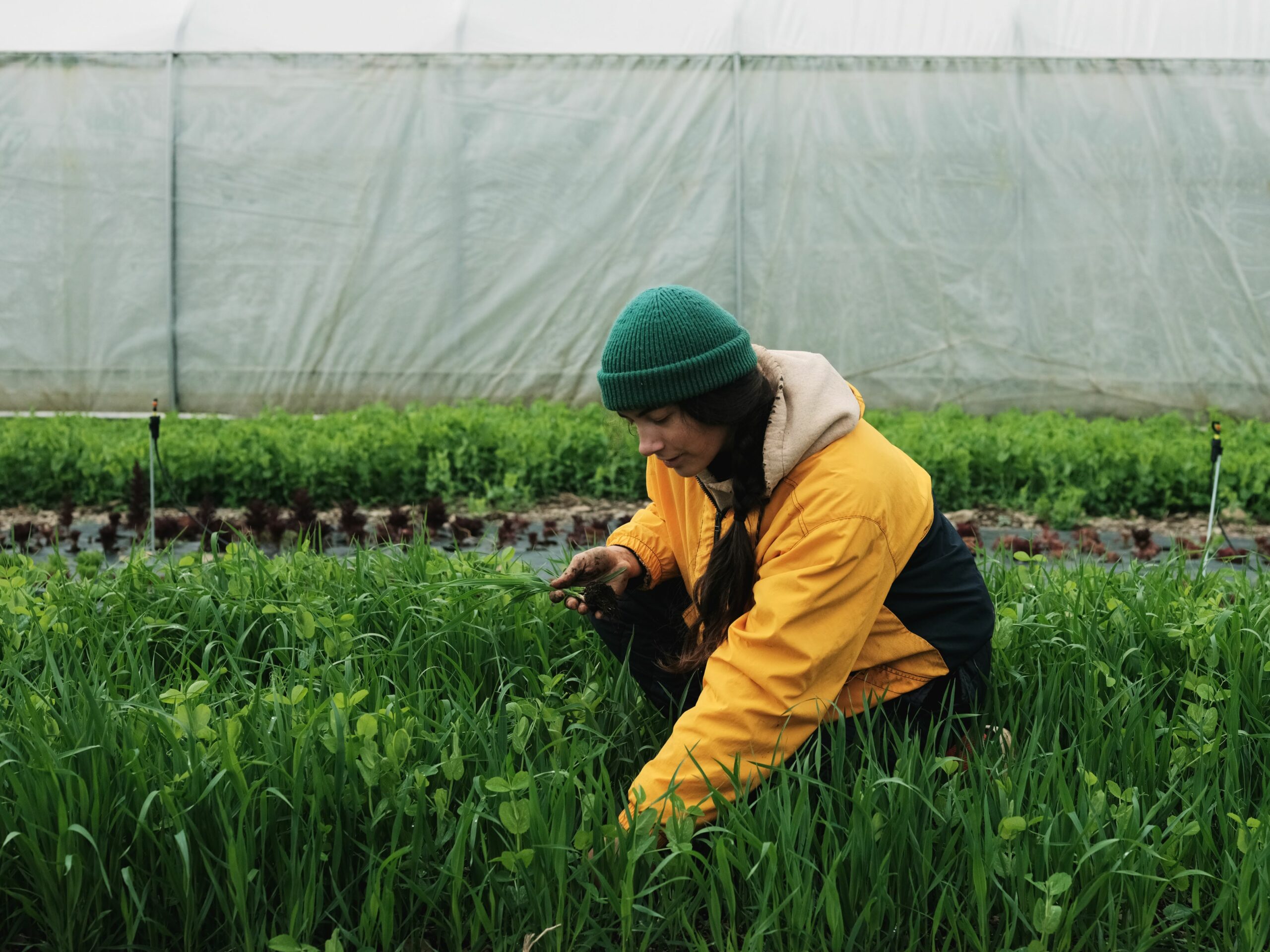When I first started market gardening, like many new growers, I wanted to squeeze as many crops as possible out of every bed. The focus was always on production, flipping as many beds as I could. An extra seedbed of mesclun mix or arugula always seemed to win over the idea of letting the soil rest. Luckily, I was also a student of Eliot Coleman, and his seminal book The New Organic Grower became my compass. Every winter I would re-read it, and his chapter on soil-generated fertility struck a deep chord. Eliot reminded us that a true organic farming system is built, above all, on farm-generated fertility, and that cover crops are absolutely irreplaceable in this way. I listened, followed his instructions, and now, after two decades of farming, I’m happy to say I fully agree. Over those years, I’ve also learned which cover crops work best under different circumstances. This journey often made me reflect on what is the best cover crop for a vegetable garden, especially when optimizing fertility in different seasons.
To answer the question of which one is the best, I’d say it depends on your season and goals. Many growers searching for the best cover crop for a vegetable garden quickly discover that timing is as important as species selection. And because garden conditions vary so widely, the best cover crop for a vegetable garden in spring might be very different from the one you choose in autumn. Let’s break it down into three key windows: spring, summer, and autumn.
Curious to see how cover crops fit into a working market garden? In this video, JM Fortier and Pierre-Antoine from Ecocert explain best practices and highlight the key principles to keep in mind.
Early Season: Getting Some Fertility In for Mid-Summer Crops
In early spring, the soil is cool and moist, and there’s usually an 8–10 week window before summer crops, especially brassicas like broccoli and cauliflower, get transplanted around late June or early July. Later squash plantings also fit perfectly into this timing. That window is ideal for what we call a catch crop, a short-season green manure sown between cash crops to enrich the soil before the heavy feeders arrive.
My favorite mix for this purpose is oats and field peas. The peas fix atmospheric nitrogen, adding a much-needed fertility boost for the following crop, while the oats contribute carbon, building soil structure and feeding beneficial microorganisms. Both germinate quickly in cool soil and grow fast. The beauty of this mix is how naturally the peas climb the oats, forming a lush, balanced canopy that covers the ground beautifully. If you are wondering what is the best cover crop for a vegetable garden, this oats-and-peas combination is often one of the most reliable early-season answers!
My go-to spring recipe:
- Oats – 70%
- Field peas – 30%
(About ½ bucket of seed total per 100-ft bed)
To prepare the beds, I start by loosening the soil deeply with a broadfork, creating channels for roots to grow and water to move freely. Then I mix the seeds in a bucket according to these proportions and broadcast them evenly across the bed. Lightly rake them in or cover with a thin layer of soil for even germination.
If this is your first year sowing legumes, be sure to inoculate the pea seeds with the proper strain of rhizobium. These inoculants come in powder form from seed suppliers. They have an expiration date and should be kept cool, dry, and out of direct light. Follow the manufacturer’s recommendations for the correct dosage and handling. This small step can make a big difference in nitrogen fixation and overall plant vigor.
Allow the crop to grow for 8–10 weeks, until it reaches knee height, then mow or incorporate it 2–3 weeks before transplanting your next crop. Terminate before the peas set seed to prevent regrowth or self-seeding.
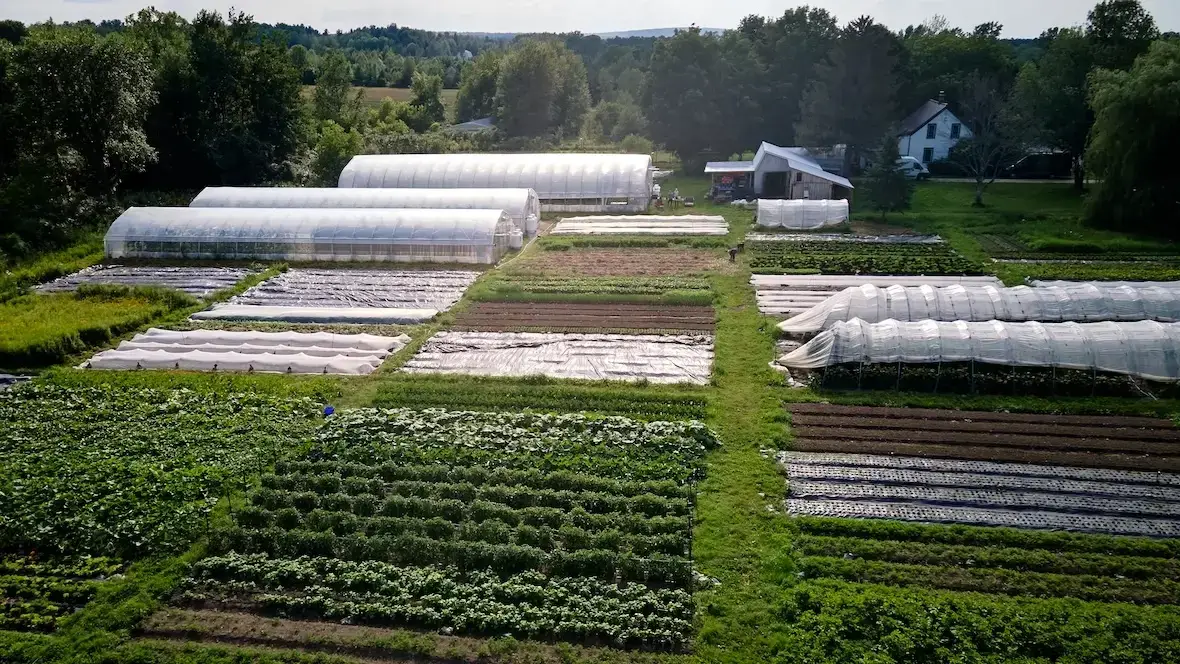
Summer: Filling the Gaps and Beating the Weeds
By midsummer, your early crops are coming out and the garden is in full swing. Beds that once held spinach, lettuce, or radishes are now bare and warm: ideal conditions for weeds to take over if you don’t act quickly. That’s when I sow my summer catch crop, a short-term green manure that thrives in heat, shades the soil, and restores fertility before fall plantings. My go-to mix combines buckwheat, cowpeas, and a touch of sorghum-sudangrass, a trio that makes the most of summer’s energy while protecting your soil’s life.
Buckwheat is the star of this mix. It germinates within days, and in three to four weeks the bed is a dense, flowering canopy buzzing with bees and beneficial insects. It’s one of those crops that reminds you to slow down and observe the beauty of the garden. Still, timing is key, cut it before it sets seed, or you’ll be pulling volunteer buckwheat for weeks. I pair it with cowpeas, which add nitrogen and extend ground cover, keeping the soil biologically active through the heat. To finish, a small portion of sorghum-sudangrass adds deep roots that break up compaction and leave behind an impressive amount of organic matter. During the hottest weeks of the year, this summer trio is the best cover crop for a vegetable garden, providing fast growth, weed suppression, and fertility.
My go-to summer recipe:
- Buckwheat – 60%
- Cowpeas – 30%
- Sorghum-sudangrass – 10%
(About ½ bucket total per 100-ft bed)
I establish this mix just like my spring covers: broadfork, broadcast, and lightly rake in the seed. In about 6–8 weeks, it will reach full maturity and can be mowed down ahead of fall crops like carrots, beets, or overwintering greens. This simple summer catch crop not only smothers weeds but also regenerates the soil during the busiest time of the year.
Autumn: Protecting the Soil and Building Fertility for Next Year
As the season winds down, my focus shifts from production to protection. Fall is when I think long-term, how to keep the soil covered, feed the microbes through the cold months, and set the stage for a strong start in spring. It’s also when I decide whether I want a cover crop that will overwinter and regrow, or one that will winter-kill and leave a clean seedbed for early plantings. Both strategies have their place; it all depends on timing and what comes next.
When I’m sowing late, sometimes as late as early November, and my main goal is simply to shield the soil from erosion and frost, I reach for a mix of winter rye and hairy vetch. This combination is unbeatable for cold hardiness. The rye germinates fast in cool soils and holds the ground firmly over winter, while the vetch weaves through it, fixing nitrogen and adding a lush green carpet that wakes up again as soon as the soil warms. By early spring, the beds are already alive, ready to be mowed down and turned under to provide an excellent boost of organic matter for heavy feeders. This rye-and-vetch combination stands out as the best cover crop for a vegetable garden when I’m seeding very late and need dependable soil cover that will survive and resume growth in the new season.
When I have a bit more time, say, sowing in early to mid-October, and I want the cover crop to die back naturally over winter, I swap the rye for oats. Oats germinate quickly and produce plenty of biomass, but will winter-kill as soon as the first hard frost hits, leaving a light mulch that protects the soil and decomposes beautifully by spring. I still include hairy vetch in that mix because it grows vigorously before the frost, contributes nitrogen, and doesn’t create residue that’s difficult to manage later. This is my preferred choice for beds I plan to replant very early in spring, like for carrots, spinach, or early lettuce. For those planning early spring crops, this oats-and-vetch combination often proves to be the best cover crop for a vegetable garden because the soil will be soft, rich, and ready to seed into as soon as conditions allow.
My go-to autumn recipes:
- For overwintering cover: Winter rye – 60% / Hairy vetch – 40%
- For winter-killed cover: Oats – 70% / Hairy vetch – 30%
(About ½ bucket total per 100-ft bed)
Both mixes are established the same way as in spring: loosen the soil with a broadfork, broadcast the seeds evenly, and rake them in lightly. If moisture is good, they’ll germinate quickly and begin anchoring the soil almost immediately. Whether the cover survives the winter or not, your beds will be protected, enriched, and biologically active, exactly what you want heading into another growing season.
The best cover crops vary depending on the season
Cover crops aren’t wasted space: they’re an investment. They protect, repair, and regenerate the soil that feeds every harvest. Whether you plant oats and peas in the spring, buckwheat in summer, or rye and vetch in the fall, each of these short green intervals adds to the biological wealth of your garden. Over time, they become the quiet foundation of productivity, the invisible engine that keeps your soil alive and your crops thriving. Ultimately, choosing the best cover crop for a vegetable garden depends on your climate, timing, and goals, but every option described here builds healthier soil.
No matter the season, keeping this question in mind, what is the best cover crop for a vegetable garden, helps guide better decision-making and long-term fertility. And as your garden evolves, revisiting which option feels like the best cover crop for a vegetable garden at that moment ensures your soil continues to thrive year after year.
Want to dive deeper into soil fertility, crop rotation, and the art of cover cropping? Check out our Market Gardener Masterclass, where we explore living soil strategies in depth.
This project is funded by the Department of Agriculture and Agri-Food Canada
Through the Farm Climate Action Fund (FCAF), farmers across the country are encouraged to adopt practices that help store carbon and reduce greenhouse gas emissions. As part of this initiative, Ecocert Canada works with certified organic and in-conversion farms to implement approaches such as cover cropping and improved nitrogen management, contributing to healthier soils and more resilient farming systems.


